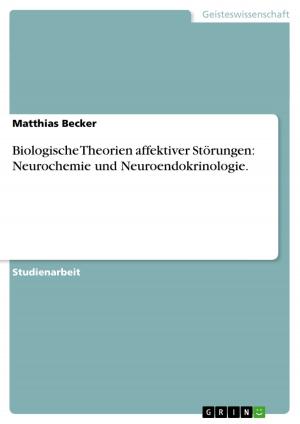Antecedents of Employees' Innovative Work Behaviour. A Learning Perspective
Business & Finance, Business Reference| Author: | Anna Lena Seeling | ISBN: | 9783668166196 |
| Publisher: | GRIN Verlag | Publication: | March 7, 2016 |
| Imprint: | GRIN Verlag | Language: | English |
| Author: | Anna Lena Seeling |
| ISBN: | 9783668166196 |
| Publisher: | GRIN Verlag |
| Publication: | March 7, 2016 |
| Imprint: | GRIN Verlag |
| Language: | English |
Master's Thesis from the year 2015 in the subject Ergonomics, grade: 1,7, Maastricht School of Management, language: English, abstract: In knowledge-intensive and fast-moving societies innovation is regarded as crucial for organizations' sustainability and success (Amabile, 1988; Kontoghiorghes, Awbre, & Feurig, 2005; West, 2002). Not only organizations in highly competitive markets need to innovate, so do non-profit organizations, such as educational institutes (Messmann & Mulder, 2011). Innovations are new and useful products or processes that address problems and challenges of a certain work context and that maintain or improve the current state of this context (West & Farr, 1989). Thus, innovative opportunities appear not only in break-through product creations, but also in continuous problem solving. In this regard, organizations increasingly need and expect all employees to contribute to the development of innovations (Messmann, 2012). Employees' contribution to the development of innovation is referred to as innovative work behaviour (IWB) (Janssen, 2000; Scott & Bruce, 1994). In order to address problems or improve the organizational status quo individuals have to accomplish a set of innovation tasks (Kanter, 1988; Scott & Bruce, 1994). These tasks capture the exploration of opportunities to innovate as well as the generation, promotion, and realization of innovative ideas (De Jong & Den Hartog, 2010; Janssen, 2000). Due to the high significance of employees' contribution to innovation development at work, the question arises which factors drive employees' IWB. Antecedents of IWB have been examined at three levels of analysis: the individual, work group, and organizational (N. Anderson, De Dreu, & Nijstad, 2004).
Master's Thesis from the year 2015 in the subject Ergonomics, grade: 1,7, Maastricht School of Management, language: English, abstract: In knowledge-intensive and fast-moving societies innovation is regarded as crucial for organizations' sustainability and success (Amabile, 1988; Kontoghiorghes, Awbre, & Feurig, 2005; West, 2002). Not only organizations in highly competitive markets need to innovate, so do non-profit organizations, such as educational institutes (Messmann & Mulder, 2011). Innovations are new and useful products or processes that address problems and challenges of a certain work context and that maintain or improve the current state of this context (West & Farr, 1989). Thus, innovative opportunities appear not only in break-through product creations, but also in continuous problem solving. In this regard, organizations increasingly need and expect all employees to contribute to the development of innovations (Messmann, 2012). Employees' contribution to the development of innovation is referred to as innovative work behaviour (IWB) (Janssen, 2000; Scott & Bruce, 1994). In order to address problems or improve the organizational status quo individuals have to accomplish a set of innovation tasks (Kanter, 1988; Scott & Bruce, 1994). These tasks capture the exploration of opportunities to innovate as well as the generation, promotion, and realization of innovative ideas (De Jong & Den Hartog, 2010; Janssen, 2000). Due to the high significance of employees' contribution to innovation development at work, the question arises which factors drive employees' IWB. Antecedents of IWB have been examined at three levels of analysis: the individual, work group, and organizational (N. Anderson, De Dreu, & Nijstad, 2004).















